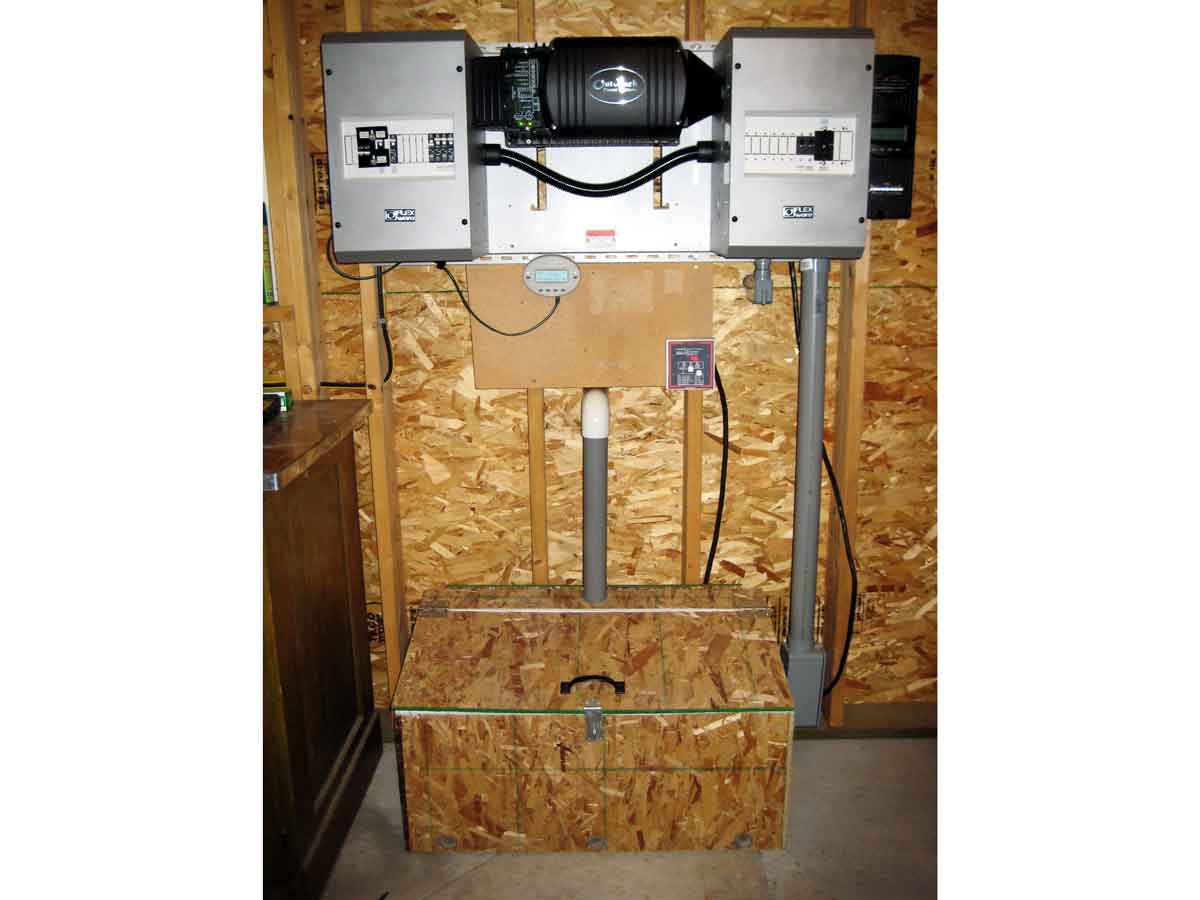In the first part of my solar power Primer, I showed how to make inexpensive photovoltaic (PV) panels (see MAKE, Volume 12, page 158, “20-Watt Solar Panel”).
Here, I’ll explain how I incorporated them into a complete solar PV power system. While this article provides installation tips and general how-to information, it’s not a step-by-step guide to building the complete system. Rather, it’s an introduction to a complex project that could easily fill a book.
WARNING:
I’m not a certified solar PV installer or certified electrician, nor do I know every detail pertaining to electrical codes. If you decide to make your own PV system, take the proper safety precautions and adhere to the electrical codes for your area. Failure to do so could result in serious injury or death by electrocution.
Plan Your Power Needs
First, identify your overall goal, obstacles, equipment and hardware needs, equipment placement, and solar panel array location.
There are 3 basic types of solar PV systems: off-grid solar PV systems, grid-tied systems with no battery backup, and grid-tied systems with battery backup (which is the type I built).
Build It Solar is a great resource for all 3 types of solar projects.
A Note on Materials
My system mainly consists of OutBack Power Systems equipment, including the inverter, breaker boxes, charge controller, and other components. You can buy these components at many different locations. A few online stores I recommend are Affordable Solar, the Alternative Energy Store, and The Solar Biz.
Resources
- Photovoltaic Systems and the 2005 National Electric Code (NEC)
- Colorado Residential Wiring Guide
- Home Power Magazine
- John Wiles’ “To Ground or Not to Ground”
- Conduit Calculator
- Electric Service Information
- Adventures of Conduit Phil




